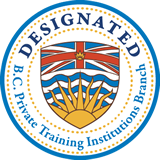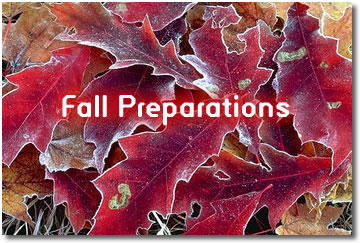 |
|
Fall PreparationsFall is a time of transition. The leaves are beginning to show signs of turning, there’s dew on the wings in the morning and there is just that hint of an edge in the air. The nice thing about transition times is that they give us a good nudge to review, rethink, and re-evaluate what we’ve been doing in light of changing conditions. I was outside monitoring a student completing her pre-flight inspection a couple of days ago in my short-sleeved shirt and began to notice that summer was no longer with us. It wasn’t exactly what a guy would call cold—some would say the lower mainland of BC never gets to what a guy would call cold—but there was that hint of an edge. If I had to stand around in that temperature for a few hours, I would certainly have been thinking about slipping into a coat. Many of us become a bit casual during the summer. It’s warm, the sun is shining; the world looks bright and inviting. We simply hop in the plane and head out for our hundred dollar hamburger and pie without a second thought. Fortunately, we almost always get away with being casual. If it gets a tiny bit chilly at altitude, we turn on the cabin heat. There are the odd times, however, when casual doesn’t quite stand us in good stead. As unpleasant as it might be, it’s not a bad idea to think through some of the possible alternative scenarios before we head out to have a good time. We could be forced down somewhere en route. The spot where we are forced down may not be our first choice of landing areas. We might be at a much higher altitude than the one we took off from. I can’t speak for the rest of the country, but BC does have a hill or two along many routes. The weather may deteriorate between our take off and our unscheduled landing. We can all run the rest of this logic pattern. Assuming we have avoided injury in the process of setting our craft down, we may be faced, all of a sudden, with standing on a mountainside in cooling temperatures dressed for a hot day at the beach. If it is getting damp or a bit of rain decides to fall or a breeze comes up, we may find ourselves in a world of trouble. Hypothermia and exposure may become challenges we have to face, right now. Hypothermia results from an ongoing deficit of body heat: our body begins losing more heat energy than it can produce. As the condition progresses, we go from feeling cold, shivery and somewhat listless to intense shivering and clumsiness to confusion, apathy, drowsiness and slurred speech, to, finally, unconsciousness and death. Think of it as a “temperature spiral dive.” Once the conditions exist and the sequence gets underway, it will continue to its inevitable and unfortunate end unless we can arrest the process. The body is unable to produce sufficient heat to keep the inner organs functioning. They shut down; death is the result. The factors which contribute to hypothermia are cold, wet, wind, fatigue and inadequate preparation. We can’t do too much about cold, wet or wind. We do, however, have the option of making some preparations for the conditions we may encounter should things go wrong. As my friend, Bob Brown, who works with our local CASARA chapter reminded me, a person might well consider dressing, or at least having appropriate clothing available, for the worst possible conditions he or she might expect to encounter should things take a turn for the worst. As Bob said, “When we go up on an exercise [with CASARA], we remind our crews to dress for where they may have to land. If people think the last few nights have been chilly in the valley, they ought to check it out at 5,000' on some mountain slope - in their shorts and t-shirt!” Adequate clothing, some form of shelter from wind and wet, emergency rations and knowledge are all hedges against hypothermia and exposure. We don’t expect our aircraft will burst into flame every time we attempt to start it, yet we all carry a charged fire extinguisher without a second thought. Knowledge is our first line of defence against hypothermia. If we know what to do and can recognize the early symptoms of the problem, we have a much better chance of avoiding danger. Essentially, we need to protect ourselves from heat loss. Proper clothing is an excellent first step. The body tends to lose heat at the highest rate through the head, neck, underarms, groin area and the sides of the chest. Clothing which protects these areas is what we are looking for. Moisture increases heat loss by a large factor: stay dry, if at all possible. If you do manage to get wet, find a way to dry off as quickly as possible. Rain gear and shelter can protect against exposure to wet. Hot fluids increase available bodily warmth. High energy foods which enable the body to produce energy are an excellent hedge against hypothermia and the effects of exposure. Survival kits should include appropriate high energy foods. Fatigue and exhaustion are death staring you in the face. Guard your energy output carefully and be alert to the early signs of fatigue and hypothermia. As the syndrome progresses, you will experience apathy and drowsiness which will be very difficult to combat without outside assistance. After a point, you simply don’t care enough to save your own life or the lives of those in your care. It’s very hard to imagine how this might be unless you have experienced it first had, but it’s the truth. As the season changes, it is an excellent time to remind ourselves it’s time to gear up and be ready. The fall, and, indeed, the winter can provide beautiful flying weather. The cooling temperatures actually allow our little planes to show something resembling performance. But, don’t be caught short. Take
a careful look at your preparations. Check out what you carry and have
available for survival equipment, clothing, food and shelter. It only
takes a moment to load the necessary equipment into the aircraft so you
are prepared should something unforeseen occur. |



